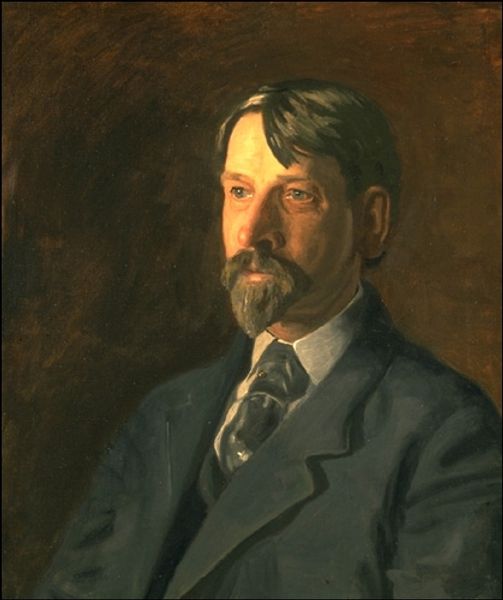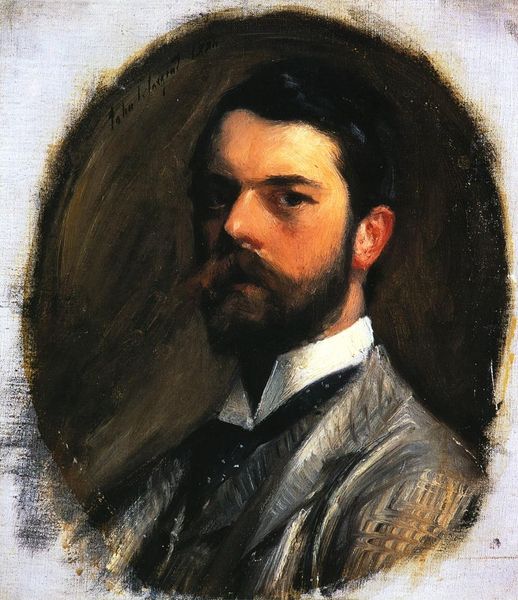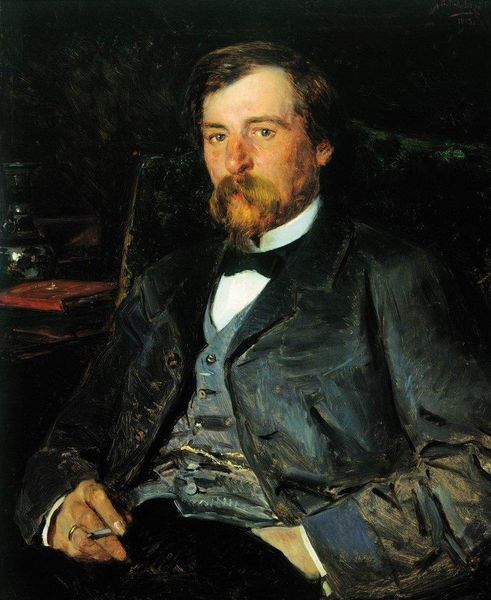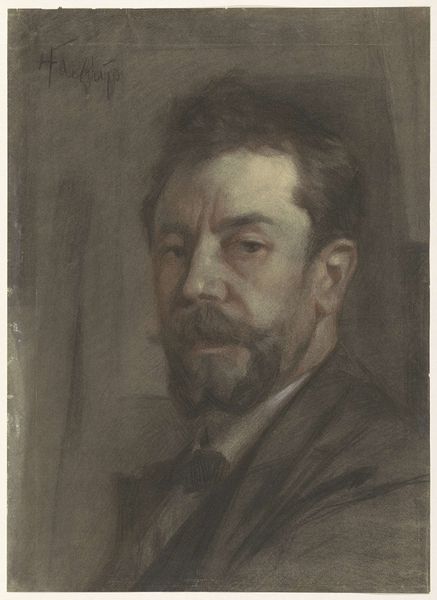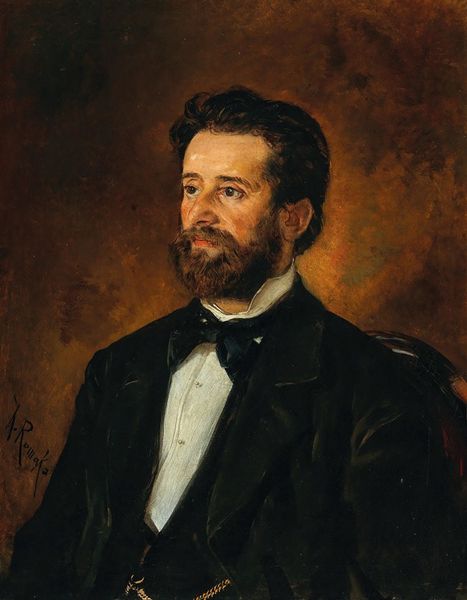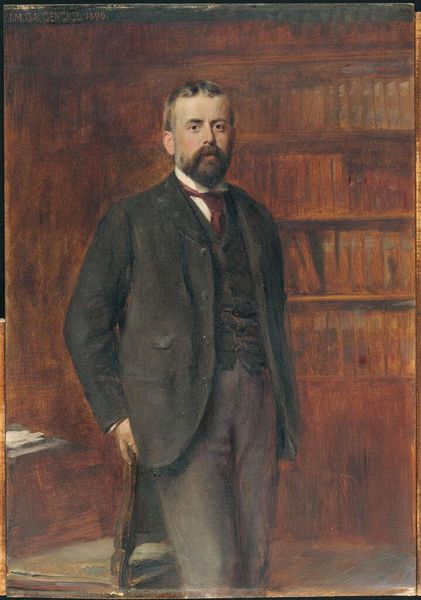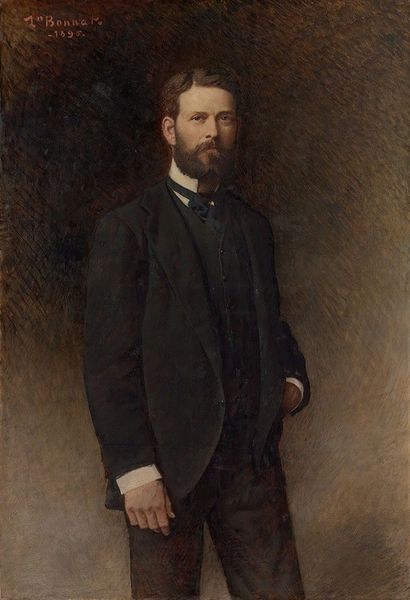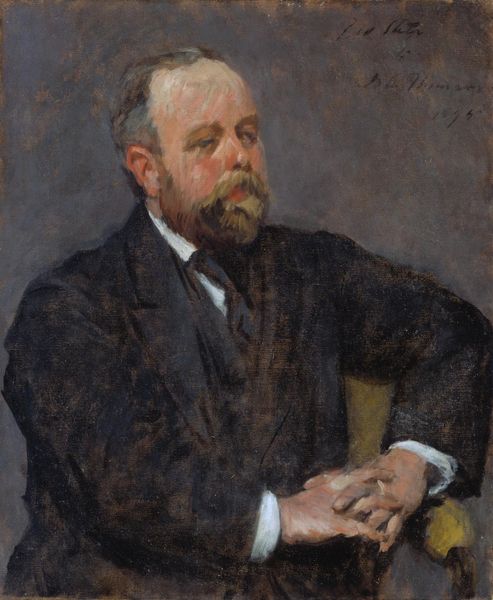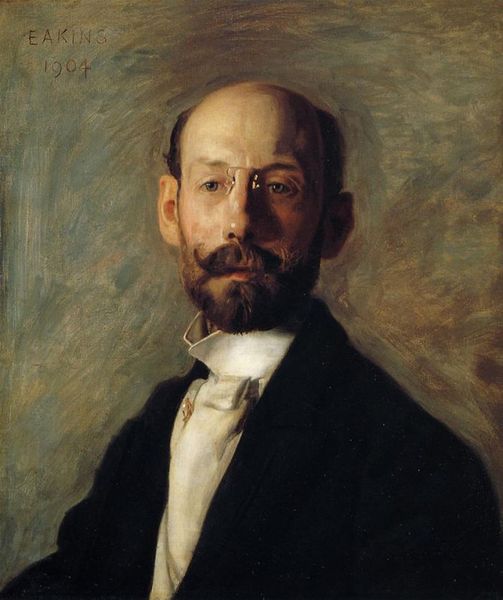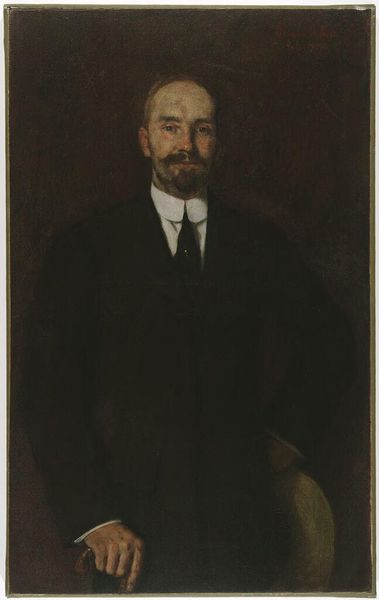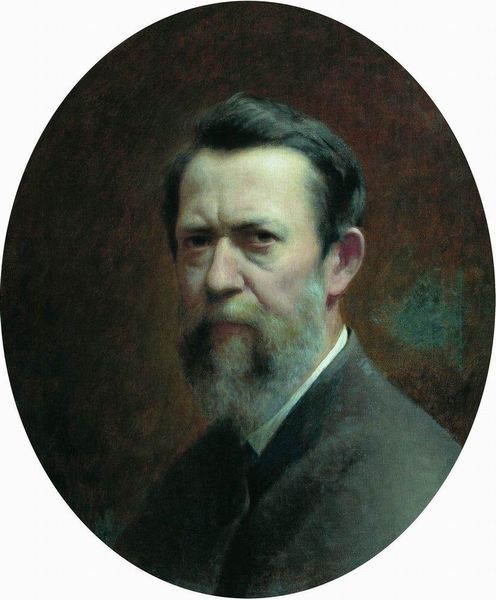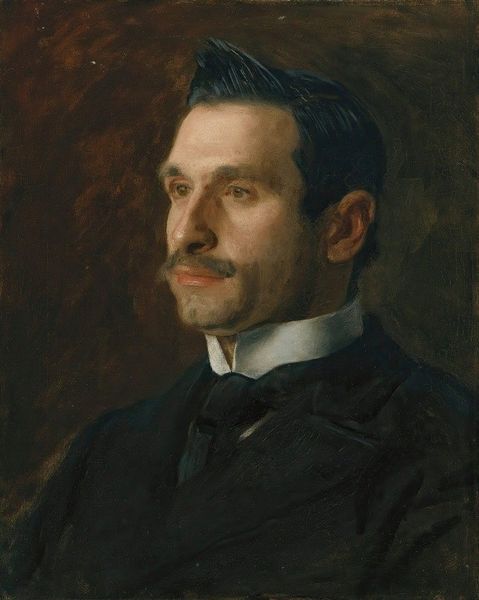
painting, oil-paint, impasto
#
portrait
#
self-portrait
#
portrait
#
painting
#
oil-paint
#
impasto
#
modernism
#
realism
Dimensions: 70 x 53 cm
Copyright: Public domain
Editor: We are now looking at John Singer Sargent's *Self-Portrait*, painted in 1906. The portrait, rendered in oil paints with a visible impasto, seems quite direct. The artist’s gaze meets ours without pretense. How do you interpret this self-representation, given the period and Sargent's place within it? Curator: Considering the context of early 20th-century portraiture, and Sargent's established position, this work provides a complex commentary on identity and the male gaze. He presents himself in a traditional mode, yet something feels subtly subversive. The direct gaze challenges the viewer, forcing us to consider what Sargent is *not* revealing, what is kept private in the performance of self. How does the formality of dress play into this perception? Editor: It definitely signals a level of societal expectation. The dark suit and tie create a formal distance, almost a shield. I’m curious about the decision to portray himself so conventionally, given the avant-garde movements bubbling up at the time. Curator: Exactly. We must question if this is merely Sargent adhering to societal expectations, or a conscious subversion. Is he reinforcing or interrogating notions of masculinity and artistic authority? He paints himself, literally, into the establishment while maintaining a knowing distance through his self-aware gaze. What sociopolitical power dynamics might be at play here, and who benefits from such representations? Editor: It makes you wonder what he truly thought of these roles. His gaze feels like a quiet resistance. Curator: Indeed, and considering how he frequently depicted women, often pushing the boundaries of societal norms and gender expectations through posture and setting, can we consider this portrait in a similar light? What does this reserved self-portrait suggest about how male artists represented themselves in a period of shifting societal expectations? Editor: I’ve never thought about it that way! I assumed it was a simple portrait. Curator: By critically engaging with the historical context and societal norms of the time, this portrait reveals complexities beyond mere self-representation. The artwork becomes a commentary on the performative nature of identity, shaped by historical forces, leaving me wondering about Sargent’s personal and artistic negotiations with the established conventions of his time. Editor: I now have a completely different perspective on what makes this portrait powerful. Thanks for revealing that!
Comments
No comments
Be the first to comment and join the conversation on the ultimate creative platform.
